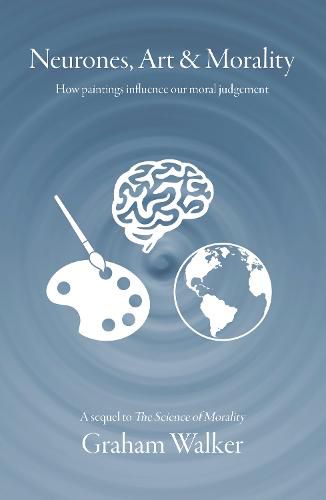Readings Newsletter
Become a Readings Member to make your shopping experience even easier.
Sign in or sign up for free!
You’re not far away from qualifying for FREE standard shipping within Australia
You’ve qualified for FREE standard shipping within Australia
The cart is loading…






No longer is explanation of art subjective and the sole domain of the art critic. Introducing Neurones, Art and Morality, this well-researched and insightful book applies recent scientific explanations of brain biology to explain the impact of art, and adds objectivity and independence from commercial and personality influences. Beyond that, it illuminates how the artist uses brushstrokes, shapes and colours to manipulate our emotions. Through the prism of science, the process of visual reception, storage, memory connections, interpretation and reaction become clear.
The differences between old masters and modern art genres are discussed and the relationship of taste to the cognitive stock of the viewer is explored. The artist draws human experience into focus enabling us to see ourselves with a clarity that is otherwise elusive. In this way we are reminded of the characteristic values of our existence, an important part of our acculturation.
This book is aimed at art lovers and is an accessible and informative scientific discourse on that magic aspect of painting, how the artist achieves and how the viewer perceives. This is extrapolated to how art was used as a moral guide to the illiterate, as propaganda and as protest art. In turn, the religious and socio-political influences on art and artists are followed through history from cave art to monochrome canvases.
$9.00 standard shipping within Australia
FREE standard shipping within Australia for orders over $100.00
Express & International shipping calculated at checkout
No longer is explanation of art subjective and the sole domain of the art critic. Introducing Neurones, Art and Morality, this well-researched and insightful book applies recent scientific explanations of brain biology to explain the impact of art, and adds objectivity and independence from commercial and personality influences. Beyond that, it illuminates how the artist uses brushstrokes, shapes and colours to manipulate our emotions. Through the prism of science, the process of visual reception, storage, memory connections, interpretation and reaction become clear.
The differences between old masters and modern art genres are discussed and the relationship of taste to the cognitive stock of the viewer is explored. The artist draws human experience into focus enabling us to see ourselves with a clarity that is otherwise elusive. In this way we are reminded of the characteristic values of our existence, an important part of our acculturation.
This book is aimed at art lovers and is an accessible and informative scientific discourse on that magic aspect of painting, how the artist achieves and how the viewer perceives. This is extrapolated to how art was used as a moral guide to the illiterate, as propaganda and as protest art. In turn, the religious and socio-political influences on art and artists are followed through history from cave art to monochrome canvases.